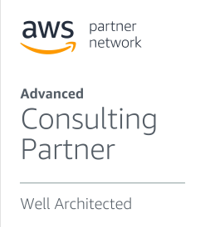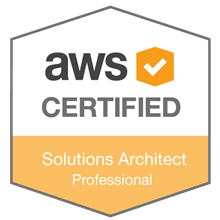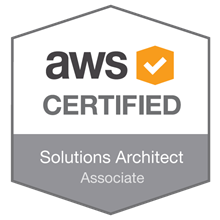AWS Well-Architected Review
Modern software development using cloud services has increased the speed of innovation in the market. New products and applications can expand your reach and support customers faster.
By implementing Well-Architected Framework best practices, you’ll create applications that are scalable, robust, and agile. The five design principles outlined for Well-Architected applications ensure that your applications have a solid foundation for success and perform reliably and efficiently.
The Well-Architected Review and Tools provide guidance on best practices and identify areas to improve your workload throughout the development and application lifecycle.
5 Pillars of the AWS Well-Architected Review
We use the Well-Architected framework to evaluate your workloads and ensure that they are secure, high-performing, resilient, and efficient. The framework provides a consistent approach to cloud architecture and is built on 5 key pillars.
Operational Excellence
Your systems and workloads should deliver business value and be transparent enough to monitor and improve continuously.
- Understand your business and customer needs and your workloads and their expected behaviors.
- Implement engineering best practices and design your workload with an understanding of how it will be deployed, updated, and operated.
- Prepare for deployment with checklists and runbooks in place; test procedures and failure scenarios.
Security
Protect your information, systems, and assets on workloads that deliver business value with mindful risk assessment and mitigation strategies.
- Implement a strong identity foundation and enforce appropriate authorization of interactions at all levels.
- Automate security best practices to improve cost-effective security at scale.
- Apply security at all layers of your workload and proactively prepare for security incidents.
Reliability
Architect systems that can recover from disruptions, dynamically acquire computing resources, and mitigate disruptions.
- Test and automate recovery procedures to detect and repair failures.
- Monitor demand and system utilization and dynamically scale resources to prevent resource saturation.
- Manage changes to your system via automation, including updates to the infrastructure.
Performance Efficiency
Make efficient use of computing resources as demand changes and technology evolves.
- Democratize advanced technologies by leveraging cloud services and keep your team focused on product development.
- Use serverless architectures to reduce the operational burden of managing servers while reducing cost.
- Reduce latency and create a better customer experience with global deployment.
Cost Optimization
Optimize cost over the entire product lifecycle by fully utilizing all resources and achieving outcomes at the lowest possible price point.
- Adopt a consumption model to based on usage, not on elaborate forecasting.
- Analyze and attribute expenditures to understand return on investment and provide transparency to individual workloads and services.
- Leverage managed services to reduce the operational burden and find a lower cost per transaction.
AWS RESOURCES
Our architecture team will identify and review your workloads to ensure your foundation is secure, reliable, efficient, and optimized for cost.
FAQ
Who can perform a Well-Architected reviews?
AWS Certified Solution Architect Professionals who have attend Well-Architected Review Bootcamp can perform an AWS Well-Architected Review. The individual must perform a 5 pillar, full baseline review.
How long does a full review take?
The review takes about 2-4 hours of client time, depending on how organized the documentation is. The reviewer will spend additional time on analysis, follow-ups, production of a remediation plan, and review with the client.
How often should you review each workload?
2-4 times per year per workload. Why so often? Because things change very quickly. Not only is AWS shifting but the maturity of an organization changes as well as the needs of the business.
Do workloads need to exist or be in the cloud to be reviewed?
No. Reviews can be conducted on POC or design phase work. Reviews can be conducted on workloads being considered for cloud migration.
Do workloads need to exist or be in the cloud to be reviewed?
No. Workloads can be done in Azure or any other platform.
What are next steps after the review is complete?
The remediation plan will potentially outline steps that you should take right now to update your workload and steps that would be beneficial to take in the future.
Our Expertise




What are your challenges? Let’s talk through the solutions.
